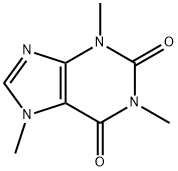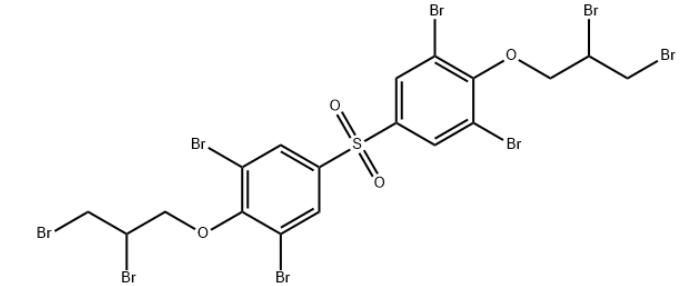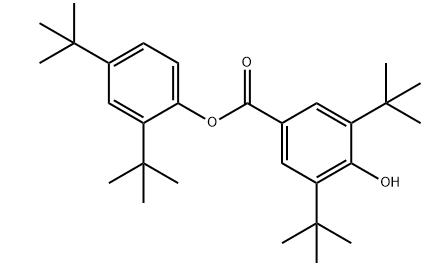General Introduction of Caffeine
Introduction
Caffeine has recently become popular as a component of topical cosmeceuticals due to its well-known
biological
activity. It has many effects on the skin including antioxidant properties, its well-documented
ability to protect cells against ultraviolet (UV)-induced non-melanoma skin cancers, and anti-inflammatory
properties. All of these qualities support the use of caffeine as an effective anti-aging cosmeceutical.
Background
Caffeine is a naturally occurring alkaloid. It is found in leaves, seeds, and fruits, and acts as a central nervous system stimulant and pesticide, killing insects that feed on the plants while rewarding pollinators. Caffeine is probably best known as a stimulant in coffee, tea, and other drinks. Over 80% of American adults consume coffee on a daily basis in order to avoid drowsiness, stay alert, and increase focus. In coffee, caffeine is extracted from the seed of the coffee plant, Coffea arabica, which is found natively in the mountains of Ethiopia. Caffeine may also be extracted from the tea leaves of Camellia sinensis, in addition to antioxidant polyphenols.

Caffeine is a methylxanthine and is similar in structure to cyclic adenosine monophosphate (cAMP)
and adenosine. After ingestion, caffeine is absorbed by the gastrointestinal tract and transported to the
central nervous system via the bloodstream. Crossing the blood-brain barrier, caffeine binds to adenosine
A1 and A2 receptors, which then cause the release of neurotransmitters such as acetylcholine, dopamine,
noradrenaline, and serotonin, among others, all of which improve concentration and mood.
Additionally, caffeine inhibits phosphodiesterase (PDE) activity; PDE is responsible for degradation of cyclic adenosine monophosphate (cAMP). With the inhibition of PDE, serum levels of cAMP increases, which subsequently increases blood pressure.
Caffeine is metabolized by the cytochrome P450 oxidase system in the liver. Ninety percent of caffeine is broken down into three dimethylxanthines, which all have different functions: paraxanthine (increases the rate of lipolysis), theobromine (a vasodilator), and theophylline (bronchial smooth muscle relaxer).2 The remaining caffeine (10%) is then excreted by the kidneys in an unchanged form.
The systemic effects of caffeine on the human body have been well-studied. However, its mechanisms of action and effects on human skin are less well-understood. Caffeine has become increasingly popular as an additive in topical skin cosmeceuticals for the purpose of improving the appearance of skin by offering antioxidant and anticarcinogenic properties. It is, therefore, important to elucidate some of these mechanisms in order to better understand the effects of caffeine on the skin.
Clinical Uses
Caffeine and Skin Barrier Penetration
The ability of any cosmeceutical to penetrate the skin barrier is essential to its ability to affect the processes and metabolism of cells. Caffeine is able to penetrate the skin barrier well. Touitou et al. demonstrated that 24 h after application to human skin, quantitative skin autoradiography found that the greatest concentration of caffeine (280 μg/tissue) was found in the epidermis, while the lowest concentration (50 μg/tissue) was found in the dermis. Studies have shown that caffeine can penetrate human skin at 2.24 ± 1.43 μg/cm2/h, with maximal absorption at 100 min after application. Caffeine penetration was unaffected by skin thickness or occlusion.
Prevention of Non-Melanoma Skin Cancers
The consumption of caffeine by humans in coffee and tea has been associated with a lowered incidence of non-melanoma skin cancers in several animal and human studies. Non-melanoma skin cancer is the most common type of cancer in the United States, with more than two million new cases diagnosed in 2012. Although mortality is low with fewer than 1000 deaths per year in the United States, morbidity and treatment costs can be significant.
Antioxidant Properties of Caffeine
Pretreatment with caffeine significantly improved cell morphology. Interestingly, the antinecrotic effects of caffeine were associated with increased ROS production at 30 min and decreased ROS production at 120 min. These results indicated that the antinecrotic effects of caffeine were related to effects other than being an antioxidant, as reviewed earlier.
Reduction in Facial Redness
An increase in the number of blood vessels present in skin and altered vessel permeability can increase facial redness by allowing more pro-inflammatory cytokines and molecules to reach the skin surface. It has been shown that the pretreatment of human colon cancer cells with caffeine significantly reduced the activity of adenosine-induced vascular endothelial growth factor (VEGF) promoter activity and subsequent expression of VEGF and IL-8 in vitro.23 In a split-face in vivo study by Ferzli et al.,24 a topical combination of antioxidants containing resveratrol, green tea polyphenols, and caffeine was applied to subjects (n = 16) twice daily for 12 weeks. Reduction in facial redness was significant and noted by at least week 6 and tolerated well by all subjects. It is now a commercially available product.
Anti-Cellulite
There are several mechanisms whereby caffeine imparts its anti-cellulite effect. Caffeine stimulates lipolysis, which is the degradation of triglycerides from adipocytes by lipoprotein lipases. Lipases are located on the adipocyte membrane and are controlled by levels of catecholamines and hormones. Caffeine has been shown to enhance lipolysis by increasing secretion of catecholamines, which activate β-adrenergic receptors. This increases the concentration of intracellular cAMP and activates hormonesensitive lipase, causing lipolysis. Additionally, caffeine can block α-adrenergic receptors, which helps to prevent excess accumulation of fats as well as encourage lipolysis. Additionally, caffeine can stimulate lipolysis by inhibiting PDE activity, which also increases cAMP levels in adipocytes. Finally, caffeine can improve the microcirculation of blood vessels, which can also improve the appearance of cellulite by increasing the flow of oxygen and alleviating compression of vessels. All of these mechanisms break down adipocytes and can reduce the appearance of cellulite.
Hair Growth
Caffeine has been shown to inhibit the activity of 5-α-reductase, prolonging the anagen phase and increasing hair growth. In a study by Fischer et al., hair follicles were taken from 14 biopsies of the vertex scalp in men with androgenetic alopecia. These hair follicles were cultured in vitro for 120–192 hours in a medium containing varying concentrations of testosterone to suppress hair growth and/or caffeine versus a control. Caffeine concentrations ranged from 0.001%–0.15%. Hair shaft elongation was measured daily. At the end of the study, caffeine alone led to significant stimulation of hair growth, despite suppression with testosterone.
There may be other mechanisms by which caffeine may stimulate hair growth. As discussed earlier, it is able to inhibit phosphodiesterase, resulting in an increase of cAMP levels and stimulation of cell metabolism, which would therefore prevent DHT-induced hair follicle miniaturization. Additionally, by improving microcirculation, caffeine can possibly improve oxygenation and increase the delivery of nutrients to the scalp.
Future Applications of Topical Caffeine
Caffeine has shown promise for the treatment of the aforementioned conditions. Combinations of caffeine plus other cosmeceuticals may offer synergistic mechanisms of action. For example, topical minoxidil is a well-known over-the-counter treatment for androgenetic hair loss, which provides growth through many mechanisms including vasodilation. Combination with caffeine may provide further improvement of microcirculation and increase of cAMP levels, which may enhance the beneficial effects of minoxidil. Additionally, topical caffeine can be easily added to sunscreens or other antioxidant cosmeceuticals to provide further protection against the development of non-melanoma skin cancers (NMSCs).


